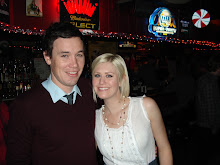Filling out the fractal
Yesterday, class was spent discussing how a fractal was filled. This was a very interesting lecture that helped me understand more how fractals will take shape and what they are composed of. Using an algorithm we were introduced to in the class prior, namely:
T' = T_1(A) U T_2(A) ; where A is a set such that
A = {x}
The iterations look something like this
{x} -> {T_1(x), T_2(x)} -> {(T_1)^2(x), T_1T_2(x), (T_2)^2(x)} ->...
and the transformations look like this
T_1(x,y) = |.5 .5, 0 .5| (x, y)
T_2(x, y) = |.5 .5, 0 .5| (x, y) + (0, .5)
At first we tried to perform these transformations on the unit square. This didn't work out because the first iteration of the transformation left no gap in between the subsequent skewed graphs , which as an effect caused the iterations to become static. We then decided to start with a square starting at the origin , going out 2 units in each direction. This caused the first transformation to have a small gap between the 2 parallelograms (the result of the first interation). This allows us to iterate infinitely.
At this point in the lecture we began discussing the idea of a point's address. That is, any point which is an element of the fractal can be assigned a distinct address. An address is a binary string of numbers that you can disect to find out exactly where this point is inside our fractal. For the specific fractal we were looking at, the first index of the address is assigned a 0 if it is on the bottom half of the original square or a one if it is on the top half. The second index of the address is assigned a 0 if it is on the bottom half of the parallelogram created for the first iteration of the transformation, and a 1 if it is on the top half. This is repeated a finite amount of times until you get the address of the exact point you are looking at.
The concept of address will be a little easier to understand if I can post the graph of the fractal we were examaning. As soon as I figure out how to graph it in mathematica, I 'll post the image.


0 Comments:
Post a Comment
<< Home